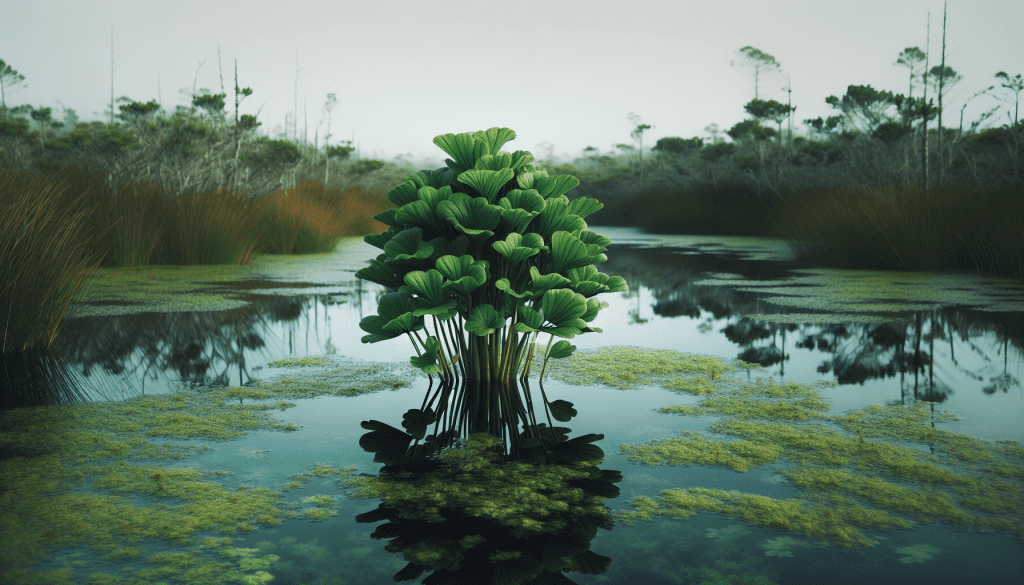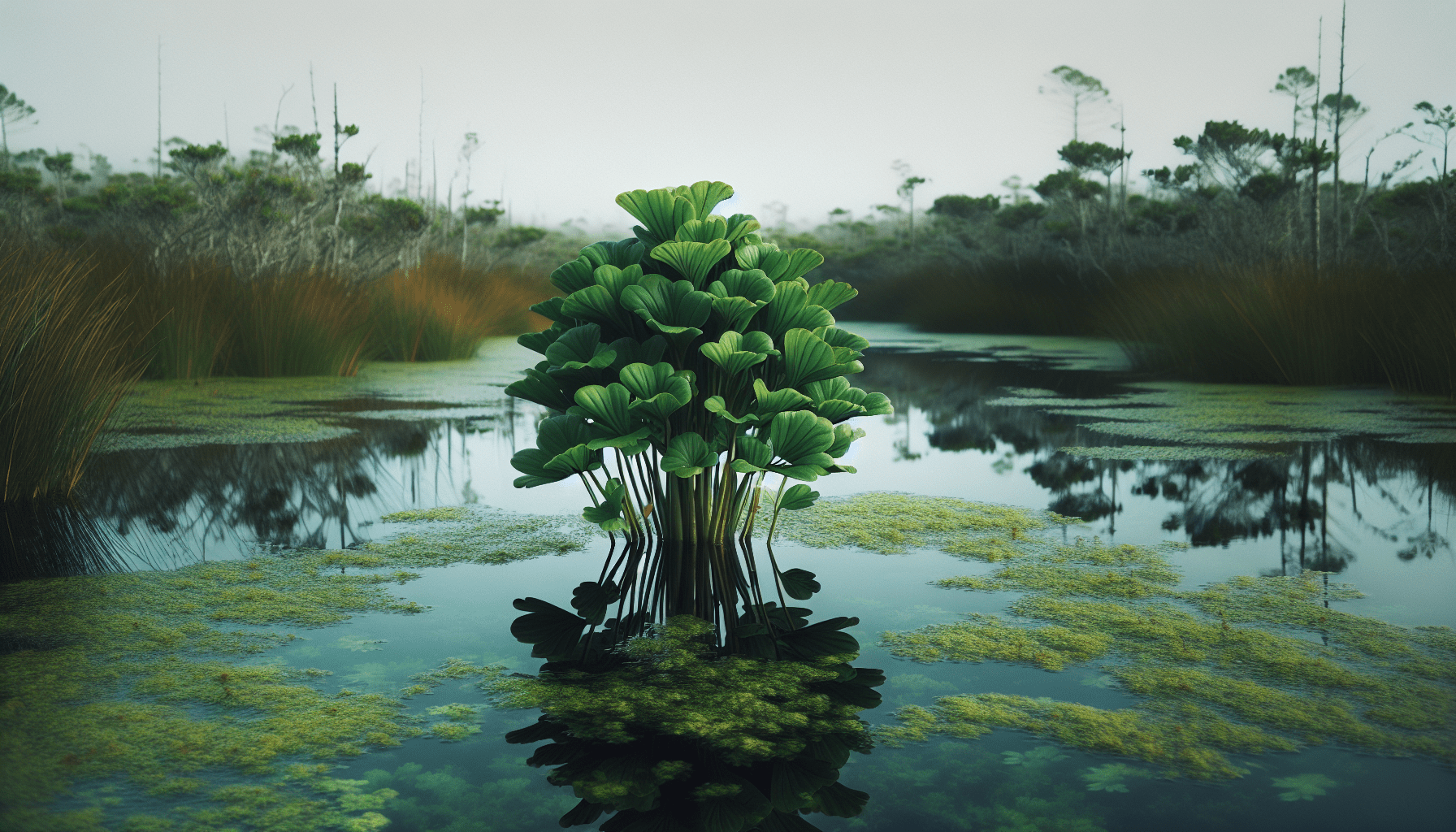Hey there! If you’re keen on protecting your local ecosystem from invasive species, you’ve come to the right place. In “Tips For Preventing The Spread Of Alligator Weed To New Areas,” you’ll find practical advice and effective strategies to help you prevent the spread of this stubborn weed. This guide will arm you with the knowledge to identify alligator weed, understand its impact, and take proactive measures to ensure it doesn’t invade new territories. So, let’s dive right in and do our part to safeguard our natural habitats!
Tips For Preventing The Spread Of Alligator Weed To New Areas
Have you ever found yourself worrying about the spread of invasive plants in your local ecosystem? If so, you’re not alone. One particularly troublesome plant is alligator weed, which can wreak havoc on aquatic and terrestrial environments alike. But fear not! By following some simple steps, you can play a critical role in preventing its spread to new areas.

What is Alligator Weed?
Alligator weed (Alternanthera philoxeroides) is a perennial herbaceous plant that is native to South America. It has since invaded various regions around the world, including the United States, Australia, and Southeast Asia. This plant is notorious for its rapid growth and ability to colonize new areas, making it a significant concern for environmentalists and land managers.
Characteristics of Alligator Weed
Understanding the traits of alligator weed is crucial for effective management. Here are some key characteristics:
- Growth Habit: Forms dense mats that float on water or spread across land.
- Leaves: Ovate to elliptical, 2-10 cm long, and arranged in opposite pairs.
- Flowers: Small, white, and clustered in spherical heads, often mistaken for clover flowers.
- Stem: Hollow, which aids in its buoyancy and spread through waterways.
Why is Alligator Weed Problematic?
You’re probably wondering why so much fuss is made about a single plant. Here’s the lowdown:
- Ecological Impact: It outcompetes native vegetation, reducing biodiversity.
- Economic Costs: Clogs waterways, affecting irrigation and hydropower stations.
- Human Health: Harbors mosquitoes, increasing the risk of diseases like malaria.
Early Detection and Monitoring
The first step in preventing the spread of alligator weed is early detection. By identifying the plant before it gets a strong foothold, you can save considerable time and resources in its management.
How to Identify Alligator Weed
Here’s a handy table to help you identify alligator weed:
| Feature | Description |
|---|---|
| Leaves | Ovate to elliptical; 2-10 cm long; opposite pairs |
| Stems | Hollow and buoyant |
| Flowers | Small, white, spherical clusters resembling clover |
| Growth Habit | Forms dense mats, both aquatic and terrestrial |
Monitoring Techniques
Effective monitoring involves regular surveys and documenting any occurrence of alligator weed. Here are some techniques you can adopt:
- Visual Surveys: Regularly scout known habitats and vulnerable areas.
- Remote Sensing: Use drones or satellite imagery for large, inaccessible areas.
- Citizen Science: Encourage community involvement in reporting sightings.
Reporting
Once you’ve identified alligator weed, it’s crucial to report it to local environmental agencies for immediate action. Proper documentation and reporting can help coordinate swift control measures.
Prevention Methods
Preventing the spread of alligator weed requires a multi-faceted approach. Let’s dive into the various methods that can help you keep this invasive plant at bay.
Clean and Inspect Equipment
One of the primary ways alligator weed spreads is through equipment that moves between water bodies. This could be anything from boats to fishing gear.
Steps for Cleaning Equipment
- Remove Visible Debris: Before leaving a site, thoroughly clean off any weeds, mud, and debris from your equipment.
- Rinse: Use high-pressure water to rinse your equipment, focusing on areas that trap water and plant material.
- Dry: Ensure your equipment is completely dry before moving to a new water body.
Safe Disposal
Proper disposal of alligator weed is essential to prevent its spread. When you remove the plant, make sure you dispose of it in a manner that it can’t grow back.
Disposal Methods
- Incineration: Burn the plant material if local regulations permit.
- Sealed Bags: Place plant material in sturdy, sealed bags and dispose of it in landfill sites designated by local authorities.
- Composting: Avoid composting, as alligator weed can survive through improper composting methods.
Public Awareness
Educating the community is a powerful tool in preventing the spread of invasive species.
Steps to Raise Awareness
- Workshops: Host workshops to educate locals about alligator weed and its impacts.
- Flyers and Posters: Distribute informational materials in public places.
- Social Media Campaigns: Use online platforms to spread awareness and encourage vigilance.
Biological Control
Biological control involves using natural enemies to reduce the invasive plant’s population. While it’s not a quick fix, it can be a sustainable long-term solution.
Potential Biological Agents
Few biological control agents have been tested and used successfully against alligator weed:
- Agasicles hygrophila (Alligator Weed Beetle): This beetle feeds exclusively on alligator weed and has shown effectiveness in controlling its population.
- Vogtia malloi (Alligator Weed Stem Borer): Another insect that targets alligator weed, providing an additional biological control method.
Pros and Cons
Every control measure has its advantages and disadvantages, and biological control is no exception.
| Pros | Cons |
|---|---|
| Sustainable: Long-term solution | Slow: Takes time to show significant results |
| Environmentally Friendly: Reduces chemical usage | Specificity: Requires careful selection of biological agents to avoid harming native species |

Chemical Control
If early detection fails and physical removal or biological controls aren’t effective, chemical treatment might be necessary. However, it should be used as a last resort due to its environmental impact.
Types of Herbicides
When it comes to alligator weed, specific herbicides can help manage its spread:
- Glyphosate: Effective for non-aquatic infestations.
- 2,4-D Amine: Widely used in aquatic environments.
Guidelines for Herbicide Use
Using herbicides requires careful application to minimize environmental harm:
- Follow Label Instructions: Always adhere to the guidelines on the herbicide label.
- Target Specific Areas: Only treat infested areas to avoid harming other plants.
- Monitor: Keep an eye on the treated area for signs of regrowth or new infestations.
Integrated Management Plan
Combining various control methods into an integrated management plan often yields the best results. By coordinating different approaches, you can more effectively prevent the spread of alligator weed.
Developing an Integrated Plan
Here’s how you can develop a robust plan:
- Assessment: Understand the extent of the infestation and resources available.
- Strategy Selection: Choose a combination of physical, biological, and chemical controls.
- Implementation: Put the plan into action, ensuring all stakeholders are on board.
- Monitoring and Evaluation: Regularly assess the plan’s effectiveness and make adjustments as needed.
Collaboration
Collaboration with local authorities, environmental groups, and the community is vital:
- Sharing Resources: Work together to pool resources for more effective control.
- Unified Efforts: Coordinate actions to ensure they are timely and effective.
Legal and Regulatory Framework
Understanding the legal framework around invasive species is essential for effective management. Laws and regulations aim to control the introduction, spread, and management of invasive plants like alligator weed.
Relevant Regulations
Familiarize yourself with some of the key regulations that apply to alligator weed:
- National Invasive Species Act: Federal law aimed at preventing the spread of invasive species.
- Local Policies and Bylaws: Local governments often have their own set of rules and recommendations.
Compliance and Best Practices
Ensure you comply with legal requirements:
- Permits: Obtain necessary permits for chemical applications or biological control introductions.
- Reporting: Follow reporting guidelines to ensure that your actions are documented and reviewed by competent authorities.
Long-Term Management Strategies
Addressing invasive species like alligator weed requires a long-term commitment. Here’s how to keep the momentum going even after initial control efforts are successful.
Sustained Monitoring
Continue regular monitoring to detect any new infestations quickly:
- Annual Surveys: Conduct at least one comprehensive survey each year.
- Community Involvement: Train local volunteers to help with ongoing monitoring efforts.
Adaptive Management
Management strategies should be adaptable to changing conditions and findings:
- Evaluation: Regularly review the effectiveness of your control measures.
- Adjustments: Make necessary adjustments based on monitoring data and new research.
Education and Outreach
Educate the next generation to ensure continued vigilance against alligator weed:
- School Programs: Incorporate invasive species management into local school curriculums.
- Outreach Events: Host community events to share the latest information and strategies.
Conclusion
Preventing the spread of alligator weed to new areas is a collective responsibility that involves early detection, effective prevention methods, and a combination of control measures. By understanding the characteristics of this invasive plant, remaining vigilant through consistent monitoring, educating the community, and adhering to legal frameworks, you can help protect your local ecosystems from this aggressive invader.
Taking these steps might seem challenging, but every small action adds up to make a significant difference. Remember, a well-informed and proactive community is the best defense against invasive species like alligator weed. Let’s work together to keep our environments healthy and diverse for future generations!
